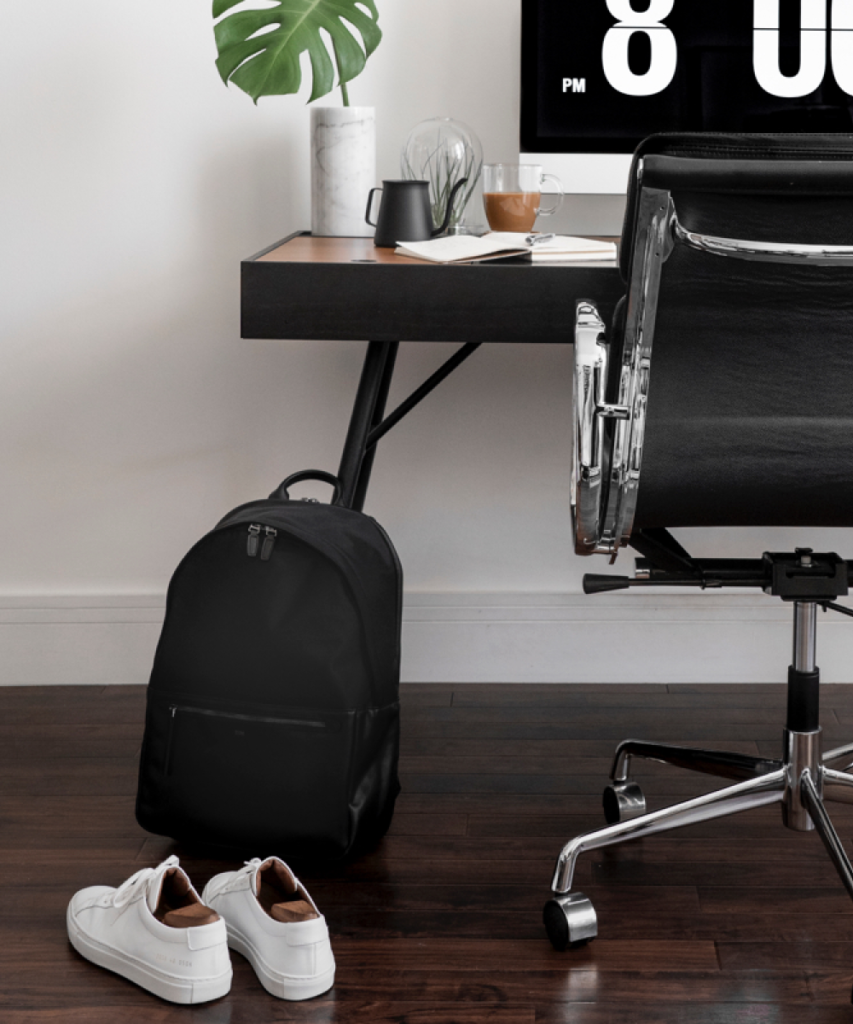
Sitting at your desk is something that the average person spends 6 hours a day doing. With all that time at your desk setup, the tendency to slouch is real — and while comfortable in the moment, not having the proper desk posture can lead to pain.
Here are 5 tips that Jon Cinkay from the Hospital for Special Surgery recommends you do to prevent back and chest pain. The result is an ergonomic workstation for when you’re sitting at the desk.
1. ADJUST YOUR CHAIR
Whether at home or at the office, the average desk height is around 29 to 30 inches tall. For some, this can be too tall or too short — you want your desk height to be just right for your height to ensure proper desk posture.
That’s where your chair comes in. The first thing you want to do is adjust the height of your chair. Aim to make sure your elbows are bent to 90 degrees when rested on your chair’s armrest to get to that ideal ergonomic desk height.
If your feet aren’t touching a floor, this can become an issue. To solve this, try adding a footstool or a DIY workaround is to add a stack of books or papers as a makeshift stool.
2. ADJUST YOUR MONITOR
The ideal distance between your monitor and eyes is close enough, but not too far where you’re squinting. This works out to be around an arm’s length so that you’re able to read without having to strain your eyes or bend forward to adjust your posture.
What you want to do is raise the monitor up until the top of the screen is at eye level. If your monitor isn’t adjustable, you can also use a stack of papers or books here too.
For an ergonomic desk setup with two monitors, consider how you use them. If you like to use one monitor as the main screen, you want it directly in your center at eye level. If you prefer to have two monitors equally, you want both of them lined up so that you’re in the middle of the two.
For a laptop only set up, you want to use a kickstand so the monitor can be at an easy to see height. Then, you can add a keyboard and mouse or trackpad.
3. MIND YOUR MOUSE & KEYBOARD
When arranging your desk setup, where you place your keyboard and mouse can play a role in your desk posture as well. As a rule of thumb, where your hands end up is where your keyboard should be. Your mouse/trackpad should end up right next to your keyboard.
When switching between your mouse and keyboard, you want to move from your elbow instead of your shoulders to prevent overuse or strain. A good reference check is to see whether you can keep your elbows positioned while pivoting your hands between your keyboard and mouse.
The key is not to reach for your tools. Let them do the work for you.
4. POSITION YOUR ESSENTIAL ITEMS
You want to position the essential items that you use regularly to the right of you on your desk (if you’re right handed). If you’re left handed, aim to position your tools to the left of your keyboard/mouse. Whether it’s a phone or a notebook to take jot ideas, having your tools within range will reduce the pressure put on your shoulders.
5. MOVE & STRETCH
After 10-15 minutes of sitting at the desk, we all begin to slouch on our chairs. To maintain a healthy desk posture and give your back a well-needed refresh, try some basic exercises that you can do while sitting in your chair.
The first exercise is a chin tuck. To do this, move your head back and forth in a straight motion while keeping your neck in the same position.
The second is for your upper traps. You’re going to do a basic stretch where you bend your head to one side and gently pull for a little more tension. Switch between your left and right side to balance out the stretch.
The third exercise is called a scapular retraction. You’re basically going to squeeze your shoulders back and forth. You can also rotate them as you make the movements as well as do an up and down type of motion.
The fourth exercise is for your lower back, this is called a pelvic tilt. Similar to moving your shoulders back and forth, you want to start with your lower back touching your chair and then sit up straight to where your back is almost 90 degrees. Repeat this motion to really give the lower back a nice stretch out
When you’re sitting down for long periods of time at your desk, the most important thing you want to do is get up out of your chair every hour. Whether it’s going for a walk, getting something to eat or drink or simply pacing around, moving up and out of your chair does wonders for your body – not to mention the context switching provides a nice mental break.
